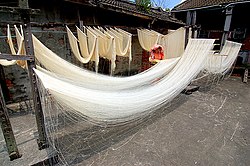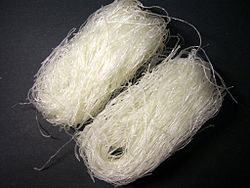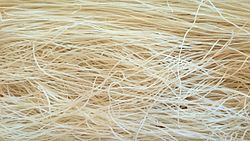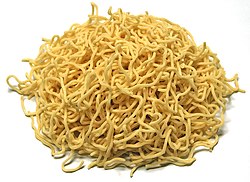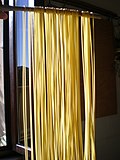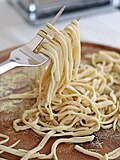

This is a list of notable types of noodles. A separate list is available for noodle dishes. Noodles are a type of staple food [1] made from some type of unleavened dough which is rolled flat and cut into long strips or strings. Noodles are usually cooked in boiling water, sometimes with cooking oil or salt added. They are often pan-fried or deep-fried. Noodles are often served with an accompanying sauce or in a soup. Noodles can be refrigerated for short-term storage, or dried and stored for future use.
